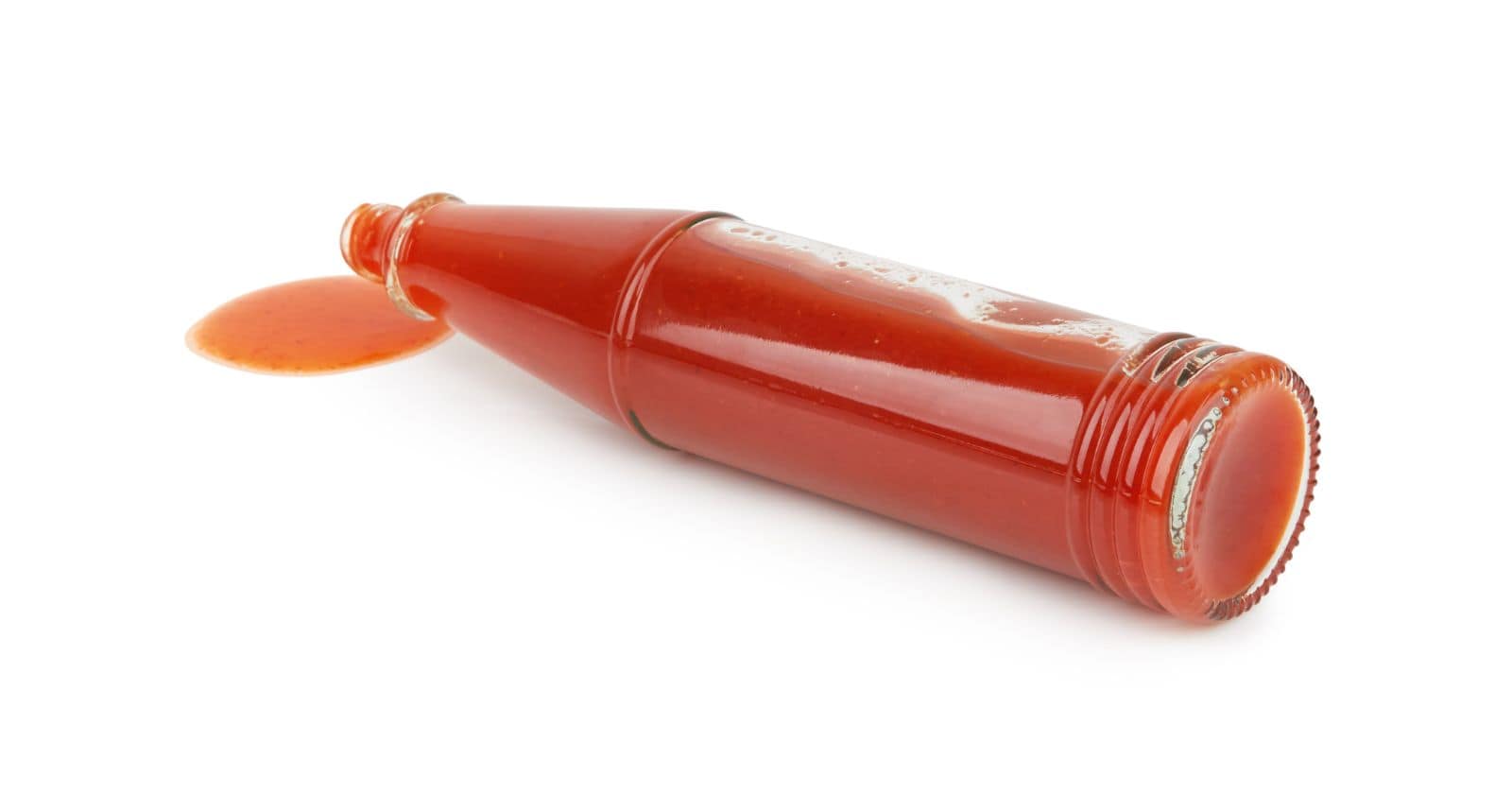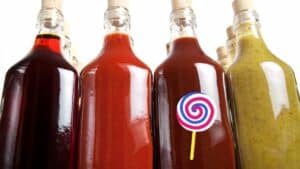As a passionate hot sauce enthusiast, I pour that fiery condiment over pretty much everything! Tacos, eggs, soups – you name it, I douse it. But as much as I love the heat, I’ve started paying more attention to my sodium intake for health reasons. So I’ve been curious – does my favorite spicy accompaniment come with a lot of salt I should be worried about?
Hot sauce might seem like a simple blend of chilies and vinegar, but the sodium content can actually vary quite a bit between brands. While some options are low in salt, certain sauces indeed pack a hefty sodium punch that could impact daily recommended limits.
In this article, I’ll break down the sodium facts on hot sauce and provide tips for keeping your intake in check. You’ll learn:
- How much sodium is typically in different types of hot sauce
- How to pick lower sodium options for your diet needs
- The health implications of too much sodium from hot sauce
- Creative ways to enjoy hot
spice while limiting salt
By the end, you’ll understand how to satisfy your hot sauce cravings without going overboard on sodium. Let’s turn up the heat the smart way!
Sodium Levels in Popular Hot Sauces
Here’s an overview of the typical sodium content found in some common hot sauce varieties:
Louisiana-Style
Tabasco, Frank’s RedHot, Crystal, and other Louisiana-style sauces contain about 124 mg sodium per teaspoon (5 mL).
A tablespoon of these sauces delivers nearly 400 mg sodium, or about 15% of the recommended daily intake.
Mexican-Style
Cholula, Tapatio, Valentina, and bottled taco sauces range from 150-220 mg per teaspoon. Pour on too liberally and sodium climbs fast.
Asian Chili-Based
Sriracha, sambal oelek, and chili garlic sauces, popular in Thai and Chinese cuisines, tend to be moderate in sodium at around 125-325 mg per teaspoon.
Gourmet Artisanal
Boutique and small-batch sauces often use less sodium. However, some “craft” options still contain up to 200 mg per teaspoon. Read those labels!
As you can see, sodium content varies widely across hot sauce brands and styles. So how much is too much?
Sodium Limit Recommendations
Before we look at lower-sodium hot sauce options, let’s review some general sodium intake guidelines:
- The Dietary Guidelines for Americans recommend limiting daily sodium to less than 2,300 mg.
- For people with high blood pressure, cutting back to 1,500 mg of sodium per day can be beneficial.
- One teaspoon of high-sodium hot sauce can contain nearly 10% of the daily value. It adds up fast!
- The American Heart Association warns that most Americans consume over 3,400 mg of sodium per day – way above healthy limits.
For the best heart and vascular health, being mindful of sodium sources like hot sauce is important. Now let’s explore some lower-salt options.
Choosing Low-Sodium Hot Sauce
To enjoy spicy flavor while watching your salt intake, look for these characteristics:
Check the Label
Scan nutrition labels and look for hot sauces with 140 mg of sodium or less per serving. This aligns with the FDA’s “low sodium” labeling guideline of 140 mg (5% DV) or less.
Seek Simple Ingredient Lists
Opt for sauces with just chilies, vinegar, and minimal other seasonings. Long additive lists tend to signal more sodium.
Consider Diluting Higher-Sodium Sauces
Mix a small amount of a saltier sauce into plain Greek yogurt, mayo, or avocado to cut the sodium level.
Explore Salt-Free Chili Flake Options
Sprinkle chili flakes, powders, and salt-free pepper blends on food for heat without sodium.
Make Your Own
DIY hot sauces let you control the sodium content completely.
With a little label reading and creativity, you can definitely find lower- or no-sodium ways to
Health Risks of Excess Sodium Intake
Why pay attention to all those milligrams of sodium in hot sauce? Here’s how overdoing salt could impact your health:
Increased Blood Pressure
Higher sodium intake is linked to elevated blood pressure, a major risk factor for stroke, kidney disease, and heart attack.
Fluid Retention
Extra sodium causes the body to retain more water, putting strain on blood vessels and the heart.
Stomach Cancer
One study associated high sodium diets with increased risk of stomach cancer. More research is still needed.
Decreased Bone Density
Heavy sodium consumption may cause excessive calcium loss through urine, leading to weakened bones over time.
So while the occasional splurge on your favorite salty hot sauce likely won’t cause harm, making lower-sodium choices most often is wise for long-term health.
Tips for Enjoying Hot Sauce With Less Sodium
With a little creativity, you can satisfy spicy cravings without going over the top on sodium:
- Add a dash of hot sauce to homemade dishes instead of relying on it heavily
- Use it thoughtfully as a garnish or drizzle versus pouring it over everything
- Flavor foods with chili flakes or cayenne instead to avoid added salt
- Make your own no-sodium hot sauces at home
- Opt for fresh peppers like jalapenos over salty sauces for natural heat
- Balance high-sodium meals with low-sodium foods the rest of the day
- Rinse canned beans, vegetables, and other salty items before using in recipes
- Choose low-sodium versions of broths, stocks, soy sauce, etc. for cooking
With some simple adjustments, you can strike the perfect balance between
The Bottom Line on Hot Sauce and Sodium
So does hot sauce contain a lot of sodium? The answer depends on the brand and serving size. Some offer just a touch of saltiness, while certain sauces pack over a quarter of the daily value into a tablespoon.
Reading nutrition facts labels and choosing lower-sodium options allows you to enjoy hot sauce’s beloved heat while keeping your overall sodium intake at a healthy level.
I for one won’t fully give up my favorite salty sauces. But using them thoughtfully in balance with other spices, herbs, vinegars, and chili-based flavors lets me eat clean and stay fiery.
Now that you know how much sodium could be hiding in that hot sauce collection, you can heat up your meals without going overboard. Use my tips to find low-salt options and creative ways to sprinkle just enough
FAQs About Hot Sauce and Sodium
Still have some lingering questions about the sodium content in hot sauces? Here I’ve answered a few more of the most frequently asked questions:
Are salt-free hot sauces recommended for people with high blood pressure?
Yes, opting for no-sodium hot sauces is an effective way to add flavor without increasing blood pressure. However, be mindful of other ingredients like sugar or preservatives.
Do hot peppers themselves contain sodium?
No, fresh hot peppers like jalapenos and habaneros are naturally sodium-free. Their heat comes from capsaicin oils, not salt.
Is there sodium in hot sauce made from fermented peppers?
Fermented hot sauces like sriracha do contain some sodium created naturally through the fermentation process. But levels are usually still reasonable at around 185-300 mg per tablespoon.
Is chili powder higher or lower in sodium than hot sauce?
Since it lacks the vinegar and extra seasonings, chili powder is a great low-sodium alternative to bottled hot sauce. Be sure to use unsaltted versions.
Are hot sauce sodium levels a health concern for athletes?
High sodium intake can negatively impact hydration and performance in athletes. Choosing lower-sodium options is beneficial for active lifestyles.
Hopefully these additional FAQs provide more insight into minimizing sodium while still enjoying the delightful heat of hot sauce! Let me know if you have any other hot sauce or sodium-related questions.





